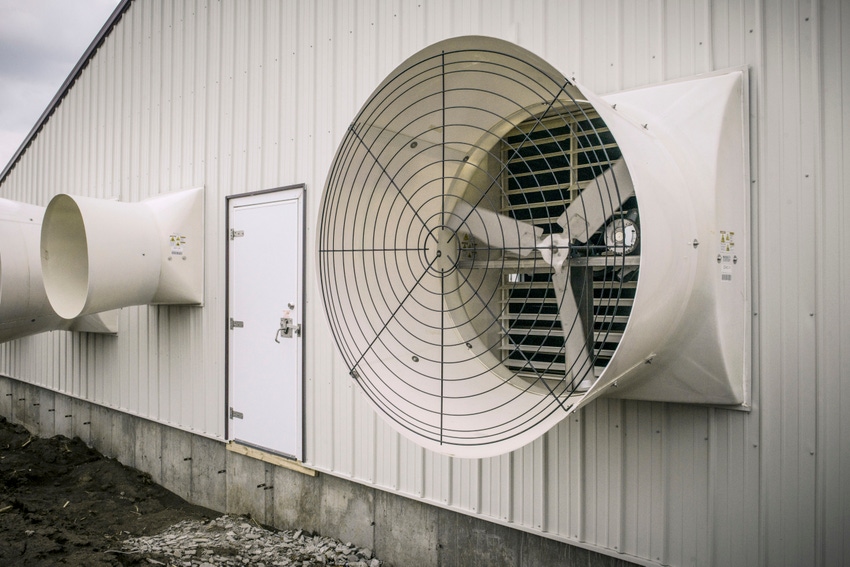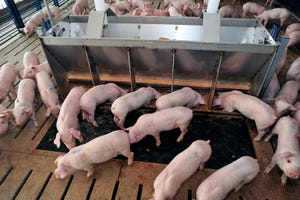Common swine barn winter ventilation mistakes
Properly adjusted inlets help prevent a draft on top of the animals that can result in chilled pigs, wet floors and increased energy costs.
October 13, 2022

With the approach of cold weather, AP Senior Technician Mark Oberreuter cites three common ventilation mistakes for swine producers to avoid in order to maintain an ideal barn environment during winter months.
Wasting heat — Oberreuter says in trying to maintain a constant temperature, some producers set their heater off temperatures too close to set point. "Then, when the heaters turn on, the temperature in the barn will overshoot the set point and start ramping up fans and exhaust too much warm air, wasting heat," he says.
Dirty fan shutters — Oberreuter says one of the biggest problems is overlooking dirty shutters, which can cause them to become sticky and barely open. "When we're slowing down variable speed fans during winter, the fan shutters need to perform properly," Oberreuter says. "They have to be clean to move easily, so that even a small amount of air going through the fan will open the shutters and ensure sufficient air exchange."
Non-uniform ceiling inlets — In most modern swine barns, Oberreuter says controllers maintain ceiling inlets at the correct position through every stage of ventilation. He notes that during winter, they are usually set at a minimum ventilation opening. "All inlets need to be maintained at the correct opening to deliver a constant velocity of air across the ceiling of the barn to properly mix the cold outside air with the warmer barn air," Oberreuter says. "What we often see are inlets that are not uniformly adjusted or out of adjustment. Properly adjusted inlets help prevent a draft on top of the animals that can result in chilled pigs, wet floors and increased energy costs."
Oberreuter says avoiding these common oversights, along with following other ventilation best practices, can help protect pig health and productivity through the winter season. For more information, producers can contact their equipment dealer or visit the AP website.
Source: AP, which is solely responsible for the information provided, and wholly owns the information. Informa Business Media and all its subsidiaries are not responsible for any of the content contained in this information asset.
You May Also Like



